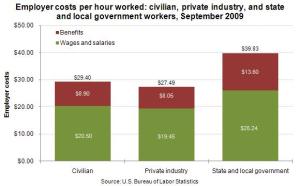Is your data science providing you enough indications that challenge your existing compensation strategy? Does it reveal that the art of compensation distribution performed by your managers is not in accordance with your compensation strategy? Old habits die-hard, so you need to make sure that your plan for data-driven decision-making is not getting overridden by compensation managers’ belief system and they are not ignoring data science recommendations.
 Effectively distributing compensation using limited budget in your disposal is always challenging. Your strategy can be to give performers much higher increases than rest of the people as it may still result in improved engagement and retention as concluded by some research results.
Effectively distributing compensation using limited budget in your disposal is always challenging. Your strategy can be to give performers much higher increases than rest of the people as it may still result in improved engagement and retention as concluded by some research results.
Your compensation system should empower you with actionable insights by providing sharper data analysis on some of the critical decision points like performance, potential, risk and social score of your employees. Performance analysis primarily depends on internal data, potential and risk analysis depend on internal as well as external data and social analysis (how person is perceived or represents company outside workplace) mainly depends on external data. While internal data remains structured, external data (e.g. tweets, social media, blogs etc) combines both unstructured and semi-structured data. Your data scientists need to extract insights and value by combining these internal and external data sources to generate a real value for your business and to datafy your compensation process.
By unlocking the true value of your data, effective data analysis provides you unambiguous decision points. As a result, you may even automate compensation distribution process in cases where you are not looking for any diversion from your planned strategy and where there is no scope for your compensation managers to add value in the process.
In a nutshell, you have to leverage your employee data, available inside and outside your organization’s firewall, to enhance data-fueled decision making as it will surely result in improved business performance and will also help you to attract and retain best talent.











